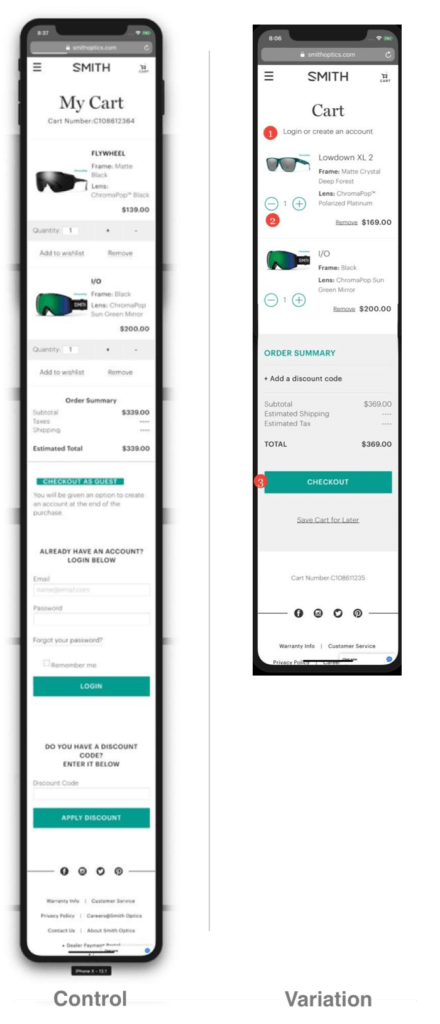But is it still relevant?
Improving your Quality Score might still improve your PPC results by 10%, but improving your PPC strategy might 10x them.
- Ad relevance: how closely your ad matches the search query. So, Google will be looking for your keywords in your ad copy. This is usually considered the easiest “first step” to improving your Quality Score because you can control your copy.
- Expected click-through rate (ECTR): Google’s determination of how likely your ad will be clicked on based on things like the query’s intent matching to your ad and your historical CTR data. I would consider this the toughest part of Quality Score to improve on since it’s up to Google’s prediction of your likelihood of pulling in a click, so there’s not much you can do to control this.
- Landing page experience: how user-friendly and relevant your landing page is to the searcher. Google will be grading you on portions like page speed load, keywords on the page, relevance, and more. Depending on your resources, this could be considered easy to improve as well since you can hop in your own site to make tweaks to the copy.
So, you got two sides to the story today, and now it’s totally your call whether you choose to focus on Quality Score or not. If you’re struggling to get your ads to show up on the SERP, improving your Quality Score can help. On the opposite end, if you’re comfortable with your account then you may want to let your Quality Score exist as is.
1. It’s not actionable
“It’s still an equal factor in ad rank and ad rank still matters if you want to show up at the top of the SERP (or at all). If you’ve got a poor Quality Score compared to your competition, that’ll hurt you as it did before. If you’ve got a great Quality Score, you’ll be better off! The math of that all still holds as it did in 2013 when it was WordStream’s anthem.”
2. It’s only applicable to search
No longer is the question “Does this ad match the search intent across one keyword signal?” but rather “Does this ad match this particular searcher’s intent across thousands of signals, including keyword, device, operating system, time of day, demographic, [and more]?”
And this may be small but one final point: Quality Score isn’t even a default column in Google Ads.
3. It isn’t always correlated with performance
Quality Score is only applicable to standard search campaigns. Why should search keywords be the only account component that gets held to this KPI? And with all of Google’s development over the years, search campaigns are only small fish in a big sea of other media-heavy campaign types like display or video.
“Quality Score is still important and the tactics you take to improve it will continue to yield incremental results. But advertisers today are more interested in PPC strategy than they are in tactics, and that’s an exciting thing to see. Improving your Quality Score might still improve your PPC results by 10%, but improving your PPC strategy might 10x them.”
“Optimizing for Quality Score often proves to be a wild goose chase. We’ve seen accounts with crazy-high CTRs, incredibly relevant ads, and beautiful, keyword-optimized landing pages… but terrible Quality Scores. We’ve even seen accounts where branded keywords (a keyword that is the name of the company and nothing more), show a Quality Score of 3.
More score-performance mismatches
Aaron writes, “Relevancy and landing page experience are bot-driven. That is, we are completely relying on Google’s bots to determine if our ads are relevant and if we deliver a satisfactory landing page experience. This system is imperfect. We know this because we have looked at plenty of ads that have low quality scores, but performed and vice versa.”
Here are a few examples from real accounts that back my points:
“I’ve always viewed Quality Score as more of a “check engine light” for campaigns. Meaning yes, it can impact a campaign’s performance but isn’t the end all be all. Keywords with low Quality Scores can still perform well, and sometimes even better than higher Quality Score keywords. And competitor keywords will always have a low Quality Score but can still convert well.
Google takes those three factors and compiles them into a score of 1 through 10 (1 being the worst and 10 being the best). Since Google runs a tight ship, I usually see any scores 7 and above being absolutely amazing, 4-6 as decent, and anything below a 4 having room for improvement.
“Is Quality Score dead? No, not at all.”
That’s great for searchers and novice advertisers, but it raises the bar for everyone on writing a truly great ad with a significantly higher Quality Score. Quality Score still matters, it just isn’t the silver bullet it used to be.”
I’ve seen folks get bent out of shape over a low Quality Score when their account is otherwise in great shape and hitting their goals. If you’re pulling in the conversions that you want at the cost you want, who cares if you have a low Quality Score? The last thing you want is to lose that stellar performance by changing something in order to appease your Quality Score column.
Just to reiterate: no! As I mentioned in the intro and as Mark reinforces in his argument, the existence and math for Quality Score is still very much there and the same as it’s ever been.
WordStream Account Director Holly Niemiec sums up this concept nicely:
1. Its impact remains unchanged
Like me, Aaron has also seen stellar campaigns with low Quality Scores:
Now, before you start frantically searching for a Google announcement that they removed this metric, you can breathe out a sigh of relief because Quality Score still exists within accounts.
Mark starts off by pointing out that Quality Score is the same as it’s always been.
3. The bar for “quality” has been raised
Here are his reasons for thinking that Quality Score still matters in 2021:
I think that making sure your ad copy and keywords are relevant and that you have a landing page that loads quickly is important, and if you have all of those things then that is more important than over-fixating on raising your Quality Score from a 5 to a 7.”
One thing we can agree on about Quality Score
So, what do you think? Is Quality Score still relevant? Let us know in the comments!
I wrote this post not in response to any information Google has released (in fact, Google’s lack of any news on this metric over the past 10 years makes me wonder…but I digress)—but because clearly, I’m not the only one who has been wondering where Quality Score stands with Google and where it will stand in the future.
To me, this indicates that there are information gaps in what makes Google’s algorithm tick when it comes to judging your other campaign types.
Mark’s last point is in line with one of mine above regarding Google’s lack of specificity as to what exactly you need to do to improve your Quality Score.
It’s difficult to control and improve on because it’s based on Google’s algorithmic judgment. And Google doesn’t give us much clarification on what specifically in our ads or landing page is causing a low score.
Bot-driven scores are imperfect
Is Quality Score going away?
The system is clearly flawed.”
Buiilding on his previous point, Mark says, “There used to be lots of advertisers writing bad ads, so it wasn’t difficult to write an ad with a good or great Quality Score to beat them all. Now, Google’s made it a lot easier for advertisers to write good (or at least not bad) ads.
So is Quality Score still relevant in 2021?
Missing data
You’ll see in the screenshot below that these keywords all have similar performance metrics. However, Quality Score data is often missing on some keywords, so to identify the differences between a six or a seven you’re left splitting hairs.


![Back-to-school Selling on Amazon [What to Expect During COVID-19]](https://research-institute.org/wp-content/uploads/2021/04/what-to-know-before-you-sell-your-small-business-768x432.png)



